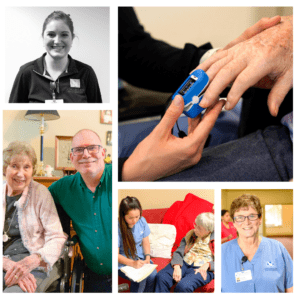Many people are unfamiliar with the concepts of occupational therapy (OT). What is occupational therapy? What is occupational therapy used for?
Let’s take a look at some of the most common questions and answers when it comes to OT.
Occupational Therapy Explained
Occupational therapy is a therapy used to develop, strengthen, recover, or maintain the skills needed for activities (occupations). The word occupation is used as skills and activities occupying a patient’s time. OT is not related to occupations as most people understand them (jobs and professions).
OT involves assessments, plans, programs, interventions, and training to implement goals based on individual patient needs.
What is Occupational Therapy Used For?
Occupational therapy can be used to assist with countless needs of patients of all ages. From the NICU to nursing homes, OT can be used when patients need help. Most OT is focused on occupations a person needs to function independently.
Occupational therapy itself is primarily used for developing skills related to:
-
Daily activities related to health
-
Education & learning
-
Sleep habits
-
Leisure & Play
-
Education & Work
These categories seem very broad because they are very broad. Occupational therapy focuses on a given patient’s needs, which can vary greatly based on age and other factors.
Here are some examples of what OT is used for by 3 different age groups:
-
Infants or babies may need OT to learn how to properly nourish themselves. OT can help babies learn how to properly suck in order to feed more effectively.
-
Children and teens may need OT for sensory integration at school. Their ‘occupation’ is school and socializing, so anything from handwriting to attention span may require OT.
-
Adults may require OT as they age. Recovering from injuries and getting back into a regular routine may require OT, especially after life-altering changes like suffering a stroke.
Occupational Therapy is a Broad Area of Healthcare
OT is an extremely broad area of healthcare. Unlike many other areas of healthcare, OT can focus on physical and mental issues and needs. Broadly speaking, OT can be broken down into 3 age groups each with 3 areas of need:
-
Pediatric OT – Physical Wellness, Mental Wellness, Independent Living
-
Adult OT – Physical Wellness, Mental Wellness, Independent Living
-
Geriatric OT – Physical Wellness, Mental Wellness, Independent Living
Keep in mind that this is a broad simplification, but focuses on the broad types of OT that can be used to help people of different ages.
All of the categories listed above have a huge number of specialization subcategories available, serving every OT need imaginable.
Charlin Health Services
At Charlin Health Services, we pride ourselves on honor, integrity, excellence, compassion, dignity, and trust. If you have any needs or questions about health services, hospice care, or other medical needs, please send us an email or give us a call.
About Our Occupational Therapy Expert
Kathy Luongo is an Occupational Therapist at Charlin Health Services. With over 25 years of experience as an OT, Kathy has worked with clients in California and Texas. Her experience spans most areas of OT–from the NICU to in-home care.
Kathy obtained her BBA in marketing from Loyola Marymount University, College of Business Administration. This was shortly followed by a post-baccalaureate in occupational therapy.
Kathy has also served as a physician liaison, program coordinator, and therapist on several rehabilitation units.



